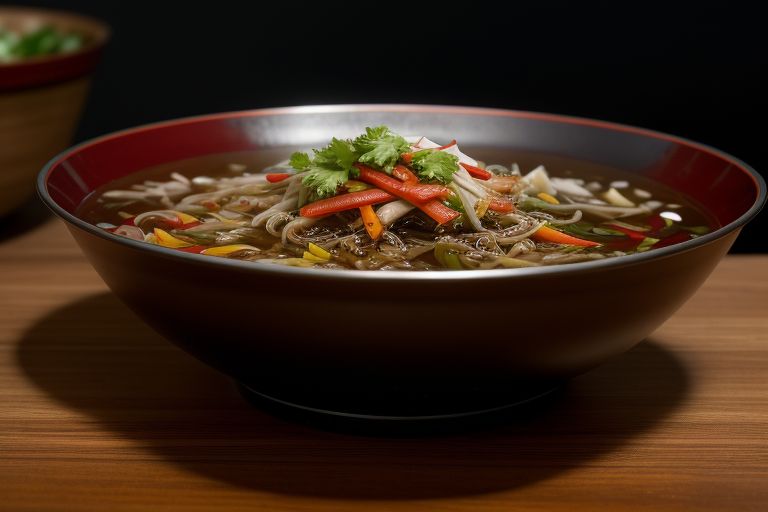Contents
Introduction
Fish sauce, also known as “nam pla” in Southeast Asia, is a popular condiment that adds a unique flavor to various dishes, especially Kemchi. Making fish sauce at home allows for customization and control over the ingredients used.
Fish Sauce Rich History
Fish sauce holds a rich history and profound cultural significance that dates back centuries. Originating from the fermentation of fish, often anchovies, with salt, this condiment was first documented in ancient China and gradually spread to neighboring countries, including Vietnam, Thailand, and the Philippines.
In Vietnam, for example, fish sauce, or “nuoc mam,” is not just a culinary ingredient; it embodies the essence of Vietnamese flavor, serving as a key component in numerous dishes, from pho to dipping sauces.
Similarly, in Thailand, it plays a crucial role in balancing flavors, enhancing dishes like pad thai and som tum.
Beyond its culinary applications, fish sauce represents the region’s fishing traditions and communal practices, often produced in family-run businesses that have been passed down through generations. In various cultures, it is associated with hospitality and sharing, as meals are often served with fish sauce on the side, allowing diners to customize their flavors. The intricate production process also reflects the artisanal skills involved in creating high-quality fish sauce, which can vary significantly in flavor and aroma.
As globalization introduces new culinary trends, fish sauce remains a beloved ingredient, bridging the gap between tradition and modernity in Southeast Asian cooking. Its distinctive umami flavor not only enhances dishes but also connects people to their cultural heritage, making it an indispensable part of the region’s gastronomic identity. Overall, fish sauce is much more than a condiment; it is a symbol of Southeast Asia’s diverse culinary landscape, representing the harmony of flavors and the deep-rooted traditions that define the region’s food culture.
Homemade or Store Bought Fish Sauce?
When considering whether to buy fish sauce or make it at home, several compelling reasons favor purchasing it. Firstly, the production of authentic fish sauce is a time-consuming process that typically involves fermentation over several months, if not years. This lengthy process can be daunting for home cooks who may not have the patience or space required.
Additionally, commercially produced fish sauces are often crafted using traditional methods that ensure a depth of flavor and complexity that can be challenging to replicate at home. Moreover, purchasing fish sauce provides access to a variety of brands and styles, allowing for experimentation with different flavor profiles suited to diverse culinary applications. The convenience of buying fish sauce saves time and effort, enabling cooks to focus on other aspects of their dishes.
Lastly, for those new to cooking or unfamiliar with the nuances of fish sauce, store-bought options provide a level of consistency and reliability that homemade versions may lack. In essence, while making fish sauce can be a rewarding endeavor for enthusiasts, buying it offers practicality, quality, and versatility that can enhance any kitchen experience.
Opting for a Homemade Fish Sauce
Nevertheless, if you still think you are up to making your own fish sauce, I applaud your initiative. Crafting your own fish sauce can be a rewarding culinary adventure, allowing you to create a product that perfectly suits your taste preferences. Before you dive into this flavorful endeavor, however, there are several important things you should know.
First, understanding the fermentation process is crucial, as it can take weeks or even months to achieve the desired depth of flavor. Additionally, selecting high-quality fish and salt is essential, as these ingredients will significantly impact the final taste of your sauce. Proper sanitation and patience are also key, as any contaminants can spoil your batch. Lastly, it’s wise to start small, experimenting with different ratios and fermentation times until you find the perfect balance. Happy cooking!
How to make Fish Sauce

To make a basic fish sauce, start by selecting the right type of fish. Generally, small fish such as anchovies or sardines are preferred due to their rich flavor. Clean the fish thoroughly, removing any scales or guts, and rinse them under cold water. Next, cut the fish into small pieces or fillets. Once the fish is prepared, it’s time to add salt.
The proportion of fish to salt is crucial in determining the taste and quality of the fish sauce. For a traditional fish sauce, a ratio of 2:1, where two parts fish and one part salt is used, is common.
Next, layer the fish and salt in a clean glass jar, making sure to cover every piece of fish with salt. Seal the jar tightly and leave it at room temperature for at least three months. During this fermentation process, the enzymes in the fish will break down proteins into amino acids, resulting in a savory and flavorful sauce.
After the fermentation period, strain the liquid through a fine-mesh sieve and store it in a clean bottle or jar. The fish sauce can be refrigerated for up to a year.
Print this recipe
Fish Sauce
Instructions
- To make a basic fish sauce, start by selecting the right type of fish. Generally, small fish such as anchovies or sardines are preferred due to their rich flavor. Clean the fish thoroughly, removing any scales or guts, and rinse them under cold water.
- Next, cut the fish into small pieces or fillets. Once the fish is prepared, it's time to add salt.
- The proportion of fish to salt is crucial in determining the taste and quality of the fish sauce. For a traditional fish sauce, a ratio of 2:1, where two parts fish and one part salt is used, is common.
- Next, layer the fish and salt in a clean glass jar, making sure to cover every piece of fish with salt. Seal the jar tightly and leave it at room temperature for at least three months. During this fermentation process, the enzymes in the fish will break down proteins into amino acids, resulting in a savory and flavorful sauce.
- After the fermentation period, strain the liquid through a fine-mesh sieve and store it in a clean bottle or jar. The fish sauce can be refrigerated for up to a year.
Popular Store Brands of Fish Sauce
Some popular and well-regarded brands of fish sauce include Red Boat Fish Sauce, Three Crabs Brand Fish Sauce, and Squid Brand Fish Sauce. These brands are known for their quality and authentic flavors, which can help enhance the taste of your dishes. It’s always a good idea to read reviews and do some taste testing to find the brand that best suits your preferences.
Tips on Using Fish Sauce
Fish sauce is a versatile ingredient that can elevate modern recipes and add a depth of flavor that enhances the overall dining experience. To incorporate fish sauce effectively, start by using it in marinades, where its umami-rich profile can tenderize proteins while infusing them with a savory kick. A few drops can transform dressings and dips, balancing out acidity and adding complexity. When sautéing vegetables or stir-frying, a splash of fish sauce can intensify flavors, creating a more robust dish.
Additionally, consider using it in soups and stews, where it can deepen the broth’s richness. For a unique twist, try adding fish sauce to pasta sauces or roasted dishes, enhancing the overall flavor without overpowering the main ingredients. Remember, a little goes a long way, so start with small amounts and adjust to taste, ensuring that the sauce complements rather than overwhelms the dish. Embracing fish sauce in your culinary repertoire opens up a world of flavor possibilities while allowing you to create modern dishes infused with traditional depth.
In conclusion, fish sauce is more than just a pungent pantry staple; it’s a liquid treasure that transforms dishes into culinary masterpieces. Whether you’re drizzling it over a vibrant salad, marinating your favorite proteins, or using it as a secret ingredient in sauces, this umami-rich elixir brings depth and complexity to every bite.
So, roll up your sleeves, embrace the delightful science of fermentation, and tap into your inner chef. With a little patience and creativity, you’ll not only master the art of making fish sauce but also unlock a world of flavors that will tantalize your taste buds and elevate your cooking to new heights. Dive in and let your culinary journey begin!

